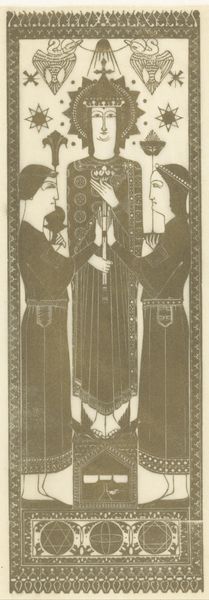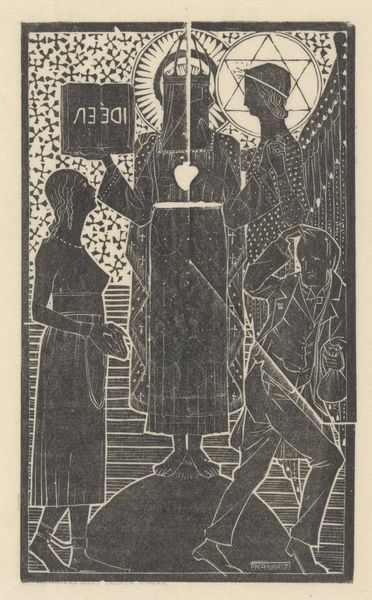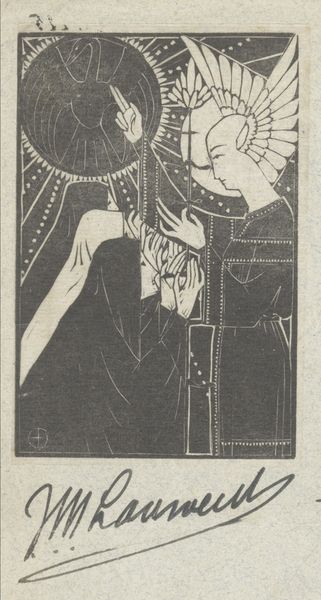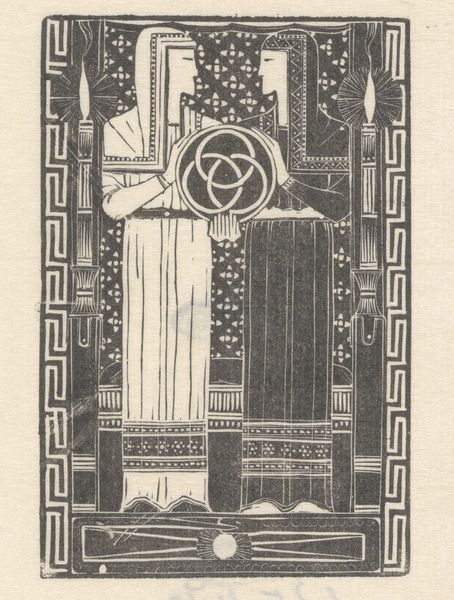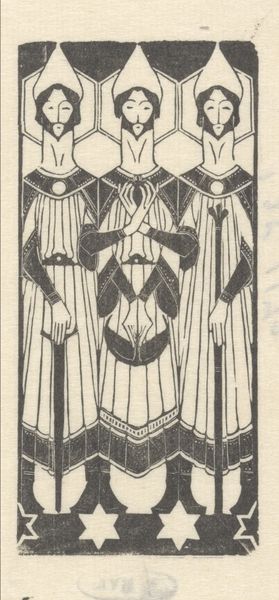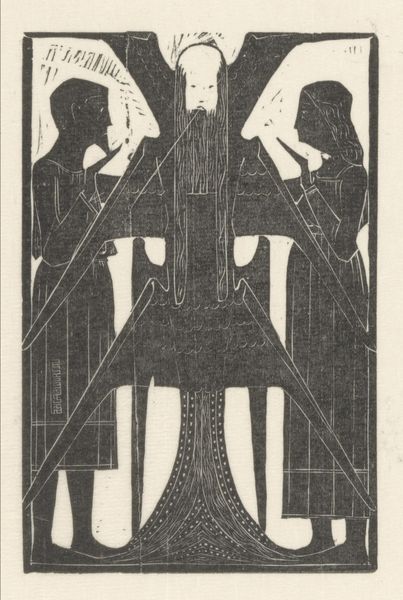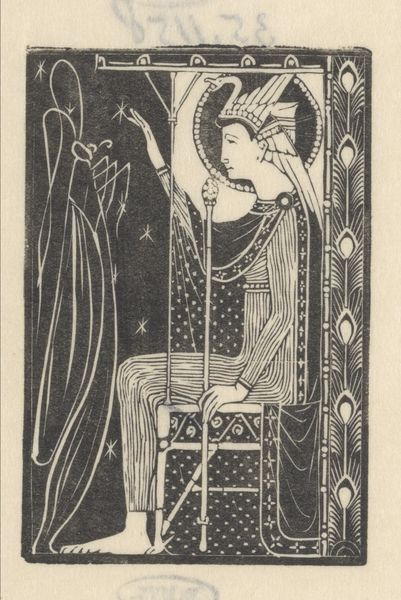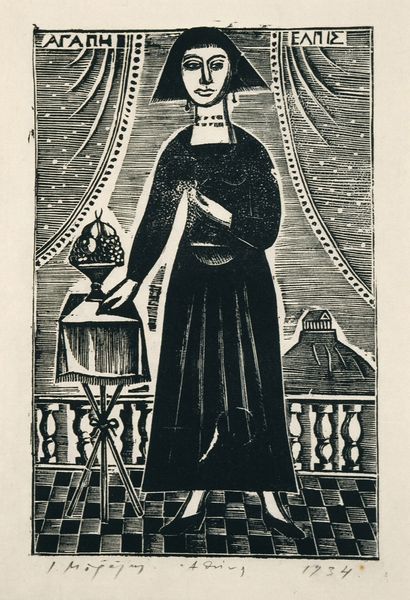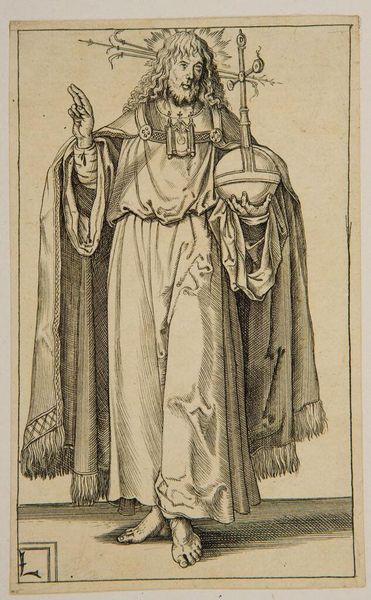
print, woodcut
#
medieval
#
pen drawing
# print
#
pen illustration
#
figuration
#
geometric
#
pen-ink sketch
#
woodcut
#
line
#
pen work
#
coloring book page
Dimensions: height 362 mm, width 132 mm
Copyright: Rijks Museum: Open Domain
Curator: Let’s spend a moment with Mathieu Lauweriks’s "Drie figuren," or "Three Figures." It's thought to have been created sometime between 1874 and 1935. It's a print, probably a woodcut. Editor: Immediately, the stark contrast grabs you. It feels weighty, solemn, like a scene pulled from some forgotten religious text. The central figure emanates stillness, authority even, flanked by attendants or acolytes. Curator: The symmetry definitely speaks to that. And note Lauweriks's interest in geometry. There are globes, stars of David. Look closely, and you see alchemical symbols nestled at the base. The figures themselves appear deliberately stylized, almost iconic. The whole work seems deeply invested in symbol. Editor: Yes, and I wonder about the context. Lauweriks, I believe, was interested in theosophy, in trying to synthesize different spiritual and philosophical traditions. Knowing that makes me think about how the three figures interact: do they represent something about hierarchy? Curator: It's possible. The central figure's regalia—the crown, the decorated robe—suggests spiritual authority. But notice the flanking figures. They're both offering symbolic objects to the central figure, so this is some form of interchange rather than just unilateral power. It speaks of relationship. And there's a mirroring—all of the figures feel carefully placed in relation to each other in what looks like acts of balance and exchange. Editor: The framing device contributes, too. It is ornate but creates this distinct sense of containment that almost seems to reinforce what's happening within the lines as though this interaction could not happen anywhere but here. What I see overall is the power of visual languages in their social context. Curator: Definitely! When Lauweriks put pen to paper (or knife to wood) in this instance, he was creating a microcosm. There's a rich symbolic ecosystem to interpret here. Editor: Ultimately, it invites you to look, to analyze, to connect visual language with ideas about power, belief, and belonging. It feels relevant to how we navigate shared space, today.
Comments
No comments
Be the first to comment and join the conversation on the ultimate creative platform.
